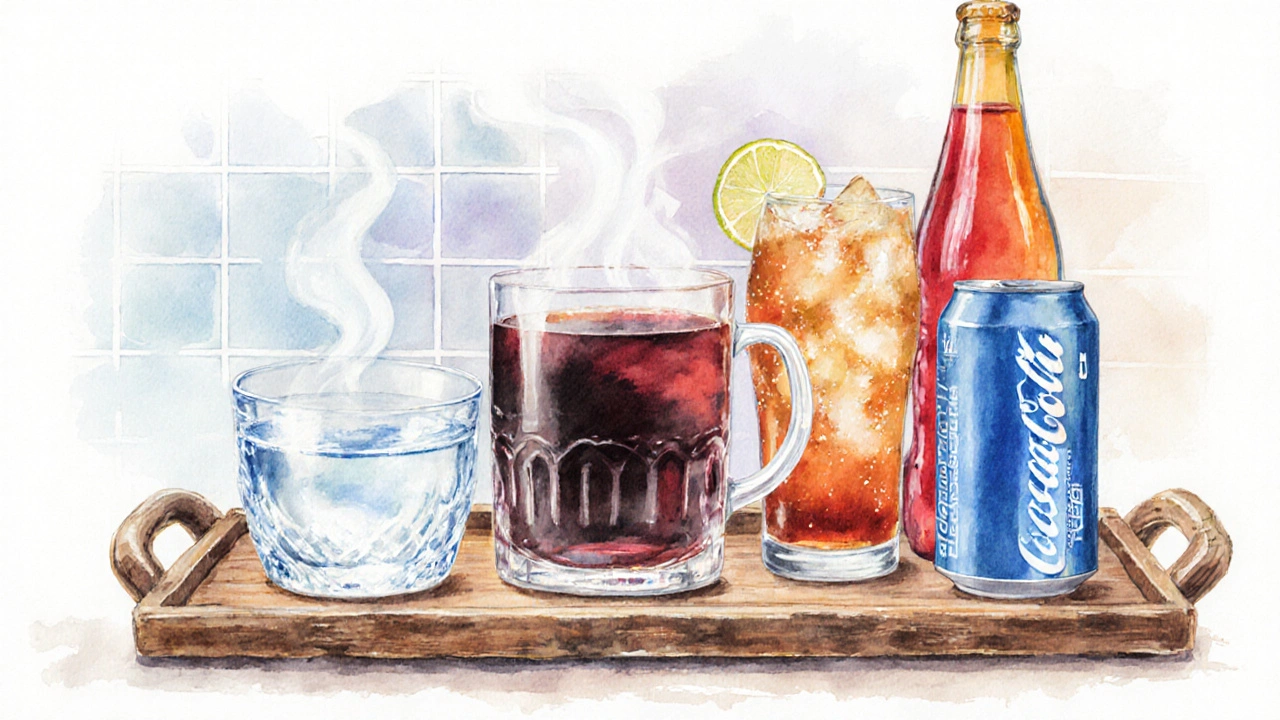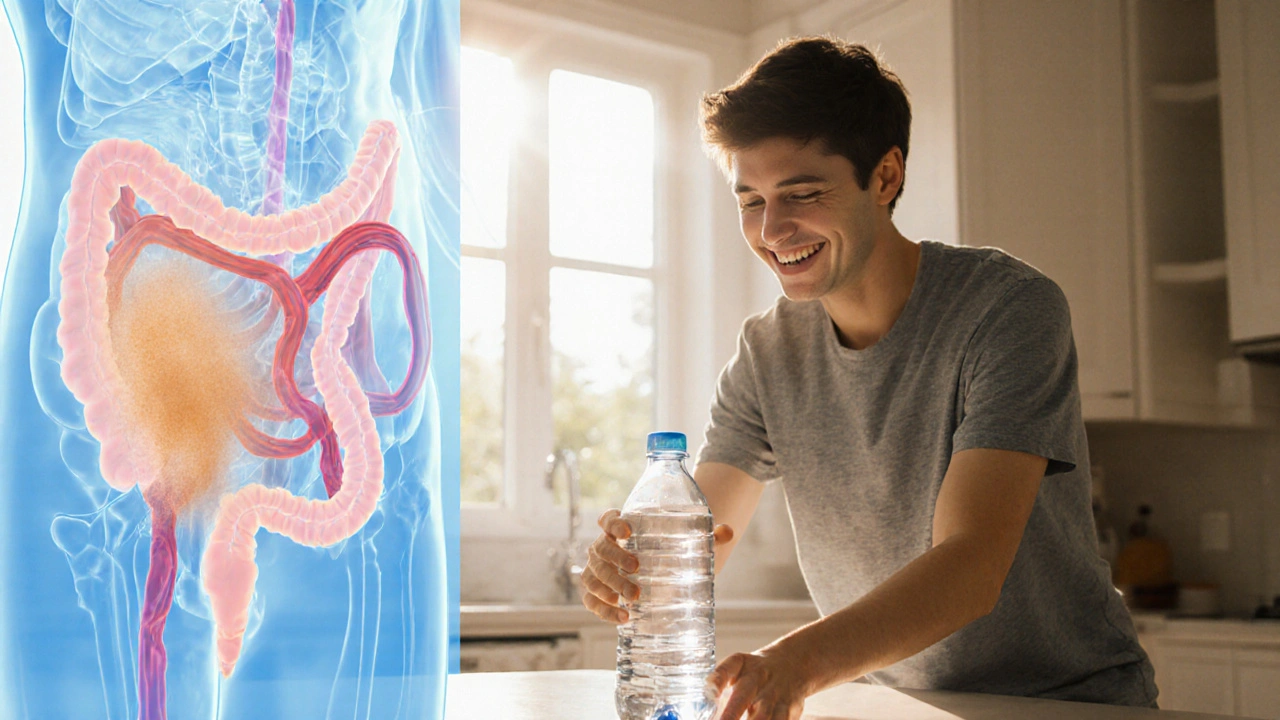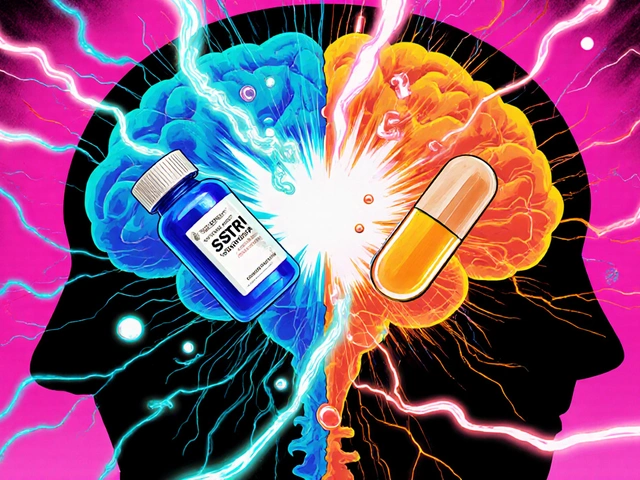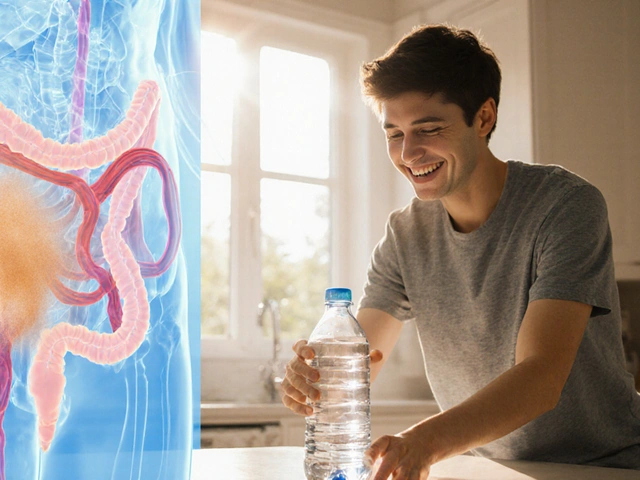Hydration & Urinary Tract Spasm Calculator
Your Daily Fluid Needs
This amount includes water, tea, coffee, soups, and high-water foods.
Select a beverage to see its effect on urinary tract spasms:
Beverage Impact Summary
To prevent urinary tract spasms:
- Drink at least 2–2.5 liters of total fluids daily.
- Choose plain water and caffeine-free herbal teas.
- Avoid excessive alcohol and sugary sodas.
- Eat water-rich foods like watermelon and cucumber.
- Take regular bathroom breaks to avoid overfilling the bladder.
Remember: consistency is key for long-term bladder health!
When you feel that sudden, cramping pain in your lower belly, you might blame a stomach bug or a muscle strain. Often the real culprit is a bladder that’s not getting enough liquid. Hydration is a physiological process of maintaining adequate water levels in the body’s cells and fluids. Keeping your system well‑filled helps the urinary tract stay smooth, flushes irritants, and stops the nasty spasms that can turn a normal day into a painful ordeal.
What Are Urinary Tract Spasms?
Urinary tract spasms are involuntary contractions of the muscles lining the bladder, urethra, or ureters. They often appear as sharp cramping, urgency, or a sense that the bladder is “tight.” While the exact trigger varies, irritation from concentrated urine, infections, or electrolyte imbalances can set the stage.
Why Water Matters for the Urinary System
Three key mechanisms link hydration to fewer spasms:
- Dilution of irritants: The more water you drink, the less concentrated urea, uric acid, and salts become. Diluted urine slides more easily through the urethra, reducing friction.
- Increased urine flow: A higher volume means the bladder empties more often, preventing the build‑up of bacteria that could turn into a urinary tract infection (UTI).
- Balanced electrolytes: Adequate fluid intake supports proper sodium, potassium, and calcium levels, all of which help the smooth‑muscle cells in the bladder contract normally.
How Much Water Should You Drink?
Guidelines have shifted from the old “8‑glasses‑a‑day” myth to a more personalized approach. The European Food Safety Authority (EFSA) suggests:
- Women: 2.0L (about 8cups) of total fluids per day.
- Men: 2.5L (about 10cups) of total fluids per day.
- Older adults or people in hot climates may need up to 30% more.
Remember, “total fluids” includes water, tea, coffee, milk, soups, and even high‑water foods like cucumber or watermelon.

Best Fluids for Spasm Prevention
Not every drink plays nicely with the urinary tract. Below is a quick comparison of common beverages and their impact on spasm risk.
| Fluid | Hydration Value | Effect on Urinary Tract | Spasm Risk |
|---|---|---|---|
| Plain water | High | Dilutes urine, promotes regular flow | Low |
| Herbal tea (caffeine‑free) | Medium‑High | Gentle diuretic, soothing | Low |
| Coffee / black tea | Medium | Contains caffeine, mild diuretic | Moderate (excess may irritate bladder) |
| Alcoholic drinks | Low‑Medium | Dehydrates, irritates bladder lining | High |
| Sugary sodas | Low | High sugar & phosphoric acid can inflame bladder | High |
| Sports drinks | Medium | Electrolyte balance helpful, but added sugars may offset | Moderate |
Practical Tips to Keep Your System Hydrated
- Carry a reusable bottle. Aim for a refill every 1-2hours.
- Set phone reminders. A 10‑second buzz is enough to cue a sip.
- Eat water‑rich foods: strawberries, oranges, lettuce, and broth‑based soups.
- Swap one coffee for a herbal tea after lunch to curb caffeine intake.
- If you’re a frequent traveler, ask for bottled water or use a portable filter.
The Role of the Bladder and Kidneys in Spasm Control
The bladder is a muscular sac that stores urine until you’re ready to release it. The kidney filters blood, balancing fluids and electrolytes. When dehydration strikes, kidneys conserve water, producing concentrated urine that irritates the bladder wall. The irritation triggers the smooth‑muscle cells to contract erratically, leading to spasms.

When Hydration Isn’t Enough
Even with perfect fluid habits, some people still experience spasms due to underlying conditions:
- Overactive bladder (OAB): Nerve signaling issues cause frequent urge to void.
- Kidney stones: Small crystals scrape the ureters, provoking pain and spasms.
- Neurological disorders: Multiple sclerosis or spinal injuries can disturb bladder control.
If you notice persistent pain, blood in urine, fever, or a sudden increase in frequency, see a healthcare professional. Early diagnosis can rule out infection or stones that need specific treatment.
Quick Recap
- Staying well‑hydrated dilutes irritants, boosts flow, and keeps electrolytes balanced.
- Aim for 2-2.5L of total fluids daily, adjusting for age, climate, and activity level.
- Plain water and caffeine‑free herbal teas are the safest choices; limit alcohol and sugary sodas.
- Combine fluid intake with water‑rich foods and regular bathroom breaks.
- Consult a clinician if spasms persist despite good hydration.
Frequently Asked Questions
Can I drink too much water and still get spasms?
Yes. Excessive water can lead to hyponatremia-low sodium levels-that cause muscle cramps, including in the bladder. Balance is key; follow the recommended intake and listen to thirst cues.
Is coffee bad for preventing urinary tract spasms?
Moderate coffee (1‑2 cups) is usually fine, but caffeine can act as a mild diuretic and irritant for sensitive bladders. If you notice urgency after coffee, switch to decaf or herbal tea.
How quickly will increasing water intake reduce spasms?
Most people feel relief within a few days as urine becomes less concentrated. Consistency over weeks provides the best long‑term protection.
Are there any foods that help keep the urinary tract calm?
Cranberries (unsweetened), cucumbers, and watermelon boost fluid intake naturally. Probiotic‑rich yogurt supports healthy bacterial balance, which can deter infections that trigger spasms.
When should I see a doctor for urinary tract spasms?
If you experience sharp pain that lasts more than a couple of days, see blood in urine, develop a fever, or notice a sudden increase in frequency, get medical advice right away. These could signal infection or stones that need treatment.






